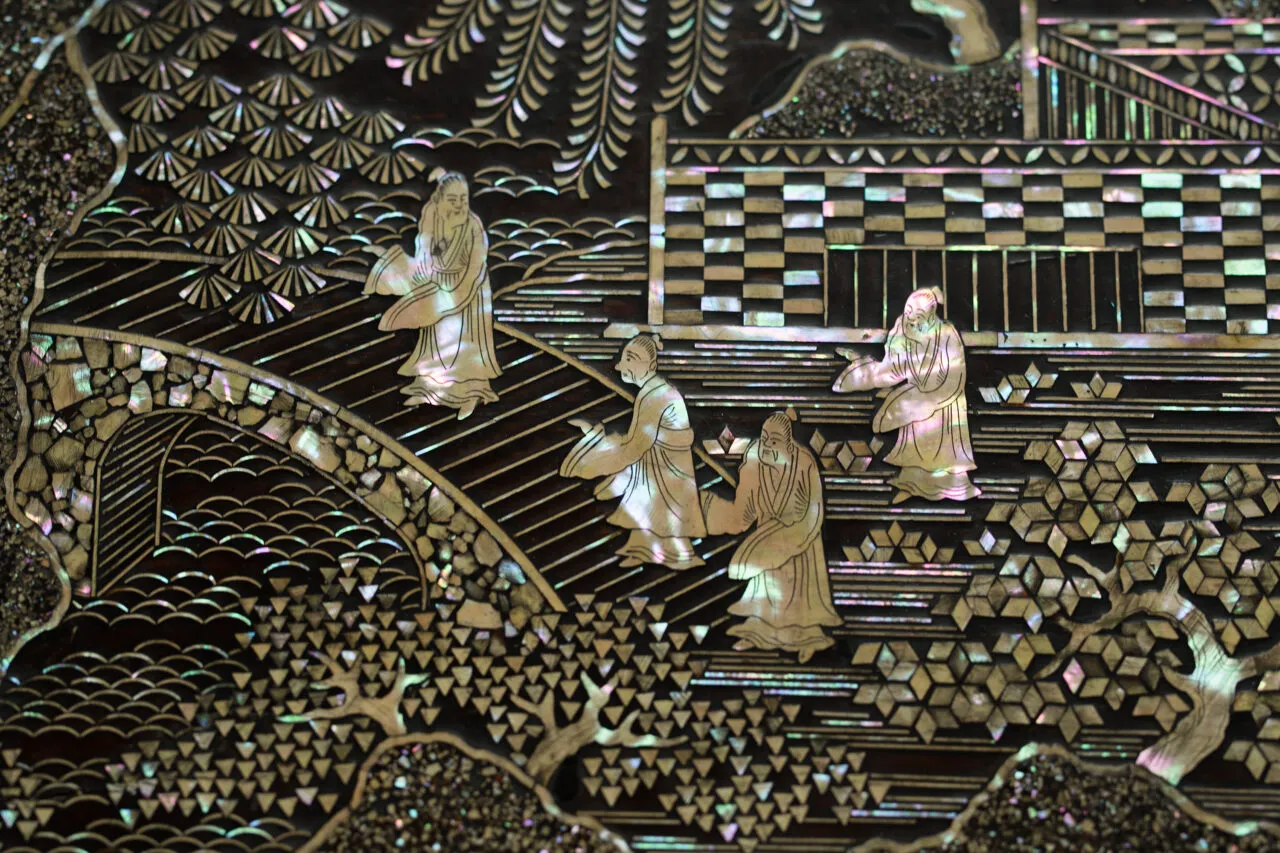Mother of Pearl
The Shell That Crossed Civilizations
It’s one of the oldest, most globally traded materials in human history. Found in the inner linings of mollusk shells, mother of pearl has moved across oceans and empires for over 7,000 years, linking coastlines to courts. Though it appears delicate, it is a material of resilience.
From the beginning, mother of pearl has traveled. In Neolithic Mesopotamia, it was inlaid into ritual bowls and plaques. Its presence far inland points to long-distance trade even in the earliest settlements. Shells harvested from the Persian Gulf and Red Sea were already part of an emerging network of exchange, proving that cultural exchange is a foundational concept of human civilization.
In medieval Syria and Egypt, Islamic artisans elevated mother of pearl into a signature of refinement. It was paired with ebony, ivory, and bone in intricate inlay work exported across the Mediterranean and into Europe.
In Mughal India, mother of pearl became part of the royal decorative arts vocabulary—set into ceremonial objects, boxes, and weapon hilts, often backed by dark wood or gold to amplify its glow.

Farther east, in Japan, artisans developed raden, embedding paper-thin mother of pearl into black lacquer. The effect was poetic—light caught like moonshine on water.
These techniques later influenced enconchado paintings in colonial Mexico, where Indigenous artists merged Spanish religious art with pre-Columbian shellwork traditions, embedding mother of pearl into devotional scenes.
Each of these objects—whether from Damascus or Delhi, Nagasaki or New Spain—tells the same story: mother of pearl has never stayed still. A material that has traveled across continents, adapting to new forms while carrying the memory of the sea.
At Iaia Caravan, we see materials like mother of pearl not simply as embellishment, but as vessels of movement—shells that have crossed borders, adapted to new settings, and carried the traces of multiple worlds. When we polish and set mother of pearl in our Trade Wind Earrings, we’re not only referencing beauty, but also honoring the long, interconnected history of a material that has always lived between land and sea, coast and interior, craft and trade. This is what we mean by ethical luxury. This is why we wear what we wear.
Mother of pearl links Mesopotamia, Islamic Spain, Mughal India, Japan, and colonial Mexico, proving how interconnected we’ve always been. Our choices today—how we adorn ourselves, and how we honor material history—are part of that same long story.
Mother of pearl reminds us that even the most delicate things can survive the journey. In doing so, they shine all the more.

